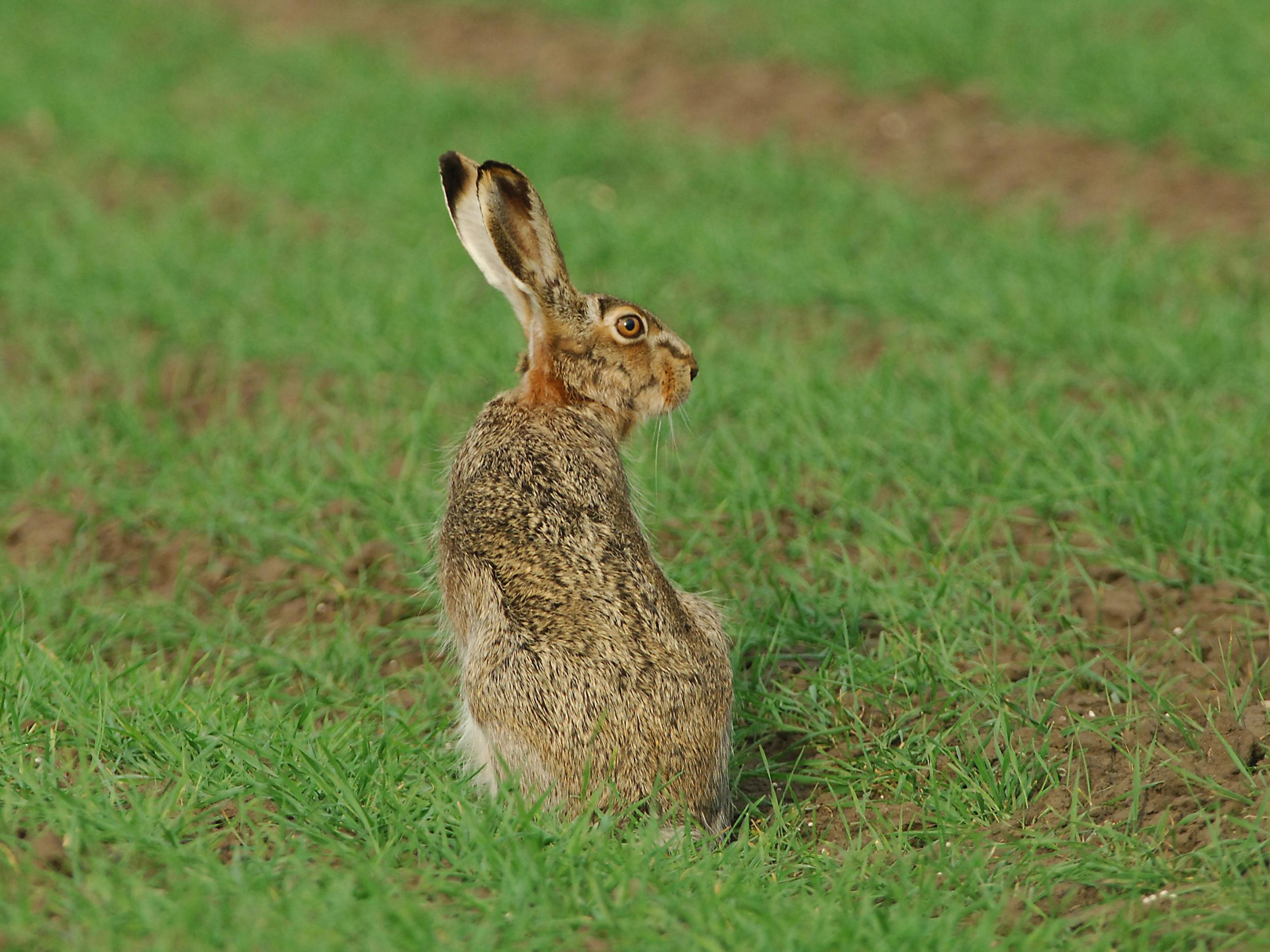Brown hares could face extinction after mysterious deaths identified as myxomatosis
Experts fear deadly infection has jumped from rabbits to their threatened cousins

Britain’s brown hares could be wiped out after a deadly infection spread from rabbits threatens this already vulnerable species, experts have warned.
Over the past month, scientists have been inundated with reports of dead or dying hares, particularly in the east of England, prompting them to launch an investigation.
Early examinations suggest the animals are victims of myxomatosis, a virus introduced to the UK in the 1950s to control rabbits, which killed 99 per cent of the population.
University of East Anglia experts issued an appeal with local wildlife trusts last week to get to the bottom of the cause of the mysterious deaths.
“The death of any animal is obviously distressing but we’re asking people to try and photograph these hares to help us understand what is happening,” said university biologist Dr Diana Bell.
“Getting good images of the bodies of these hares, along with their exact location, is crucial for us to rule out or identify possible diseases.”
Since issuing their public plea, the team has received an “overwhelming” number of responses and have concluded that myxomatosis is the likely cause.
Dr Bell told BBC Radio 4’s Today programme that the disease has the potential to wipe out the hare population, and that the hundreds of cases she was aware of were likely “the tip of the iceberg”.
“From the photographs that have been sent in to me we’ve definitely got a jump of myxomatosis to hares,” she said.
East Anglia is considered a vital location for the brown hare, which has declined by more than 80 per cent across the country over the past century and has nearly vanished entirely from the southwest.
Intensification of agriculture and hunting have both been implicated in the decline of this iconic mammal, which now numbers around 700,000 across the country.
Myxomatosis, which is spread via bloodsucking insects, has been recorded in these animals only on rare occasions, and the experts are concerned about the additional pressure it will place on remaining hares.
“The reports of hare deaths are obviously of great concern, especially considering the importance of the populations in this region,” said Ben McFarland, head of conservation at Suffolk Wildlife Trust.
While they continue to monitor hare populations, the experts urged the public to continue sending their images of sick or dead hares to Dr Bell.

British mammals in general are thought to be facing unprecedented losses, with many popular species such as hedgehogs and water voles declining by up to two-thirds over the past two decades.
Populations of brown hares’ alpine cousins, mountain hares, have plummeted by 99 per cent in parts of the Scottish Highlands since the 1950s.
These trends are part of a general trend identified by conservationists as land change, pesticide use and climate change have pushed around 15 per cent of UK wildlife to the verge of extinction.
Join our commenting forum
Join thought-provoking conversations, follow other Independent readers and see their replies
Comments